Heart disease remains a leading cause of mortality worldwide. Often, symptoms remain hidden for years, emerging only when the condition escalates to a heart attack. While annual check-ups are crucial, particularly for individuals with diabetes, high blood pressure, or those who are overweight, the body sometimes provides subtle clues, especially on the skin, that extend beyond typical chest pain and breathlessness.
Here are seven skin-related signs that could indicate underlying heart disease:
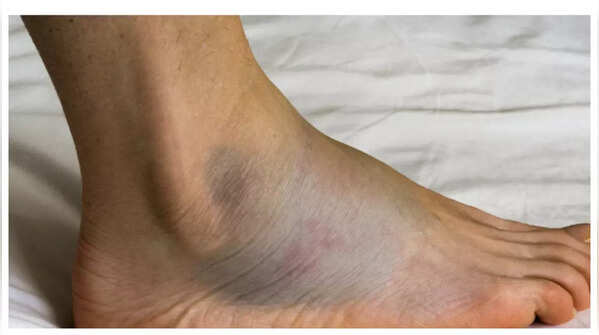
Swelling, particularly in the feet, ankles, and lower legs, is a common sign. This occurs when the heart's pumping efficiency decreases, leading to fluid accumulation in tissues. Shoes might feel tighter, or socks may leave deep marks on the skin. In severe instances, swelling can extend to the upper legs and groin. If this symptom is accompanied by fatigue or shortness of breath, medical consultation is advised.
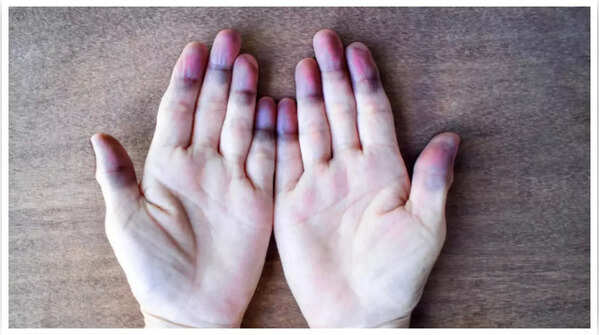
If areas of your skin, like fingers or toes, turn blue or purple and fail to regain their normal color after warming, it could signal inadequate oxygen delivery by the blood, indicating a struggling heart. This condition, known as cyanosis, often points to blood vessel blockage or impaired heart function. Prompt medical attention is crucial as oxygen deprivation can harm skin and tissues.
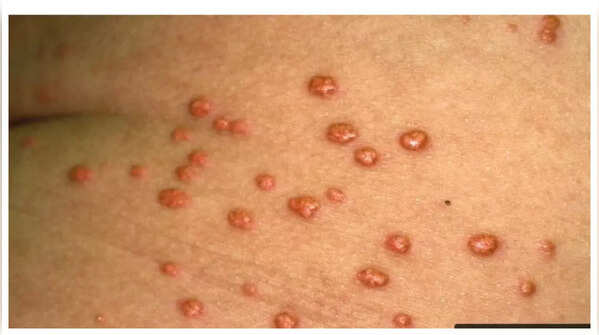
The appearance of yellow or orange, waxy bumps or plaques on the skin, especially around the eyes, elbows, knees, or back of the legs, indicates fatty deposits due to high cholesterol or triglyceride levels. While painless, these are important indicators of potentially dangerous cholesterol levels and increased heart disease risk, warranting a cholesterol check.
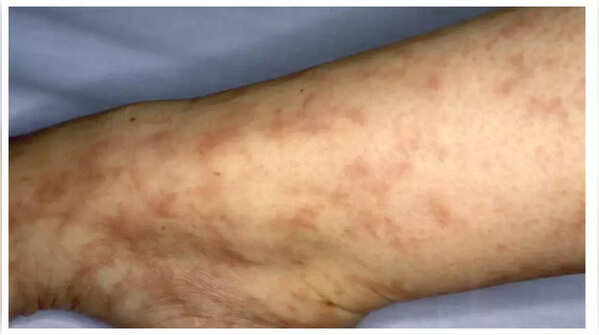
A web-like, purple or blue pattern on the skin, primarily on the legs, may signify cholesterol embolization syndrome. This occurs when small arteries become blocked by cholesterol crystals, impairing blood flow. Distinct from rashes or infections, this pattern requires immediate medical consultation due to its potential link to severe heart conditions.
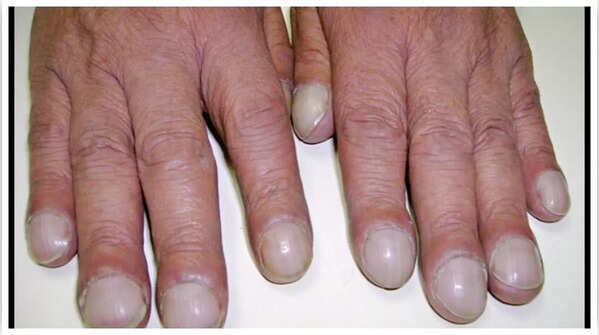
Clubbing, characterized by the rounding and swelling of the fingertips or toes, results in bulbous or downward-curving nails. This alteration may suggest low blood oxygen levels, often related to heart or lung conditions. Any gradual changes in nail shape should prompt a medical evaluation.
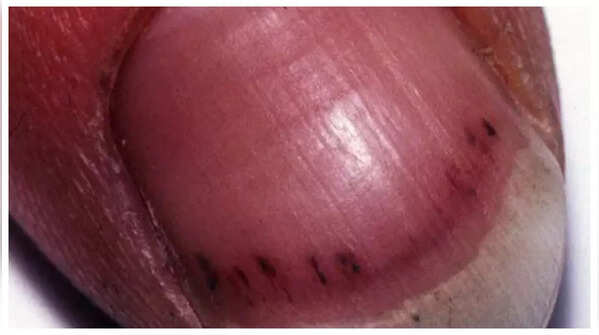
Tiny red or purple lines resembling splinters beneath the nails can indicate damage to small blood vessels. These lines may signal infective endocarditis, a severe heart infection. Lasting for several days, they should not be ignored, especially when accompanied by fever or fatigue.
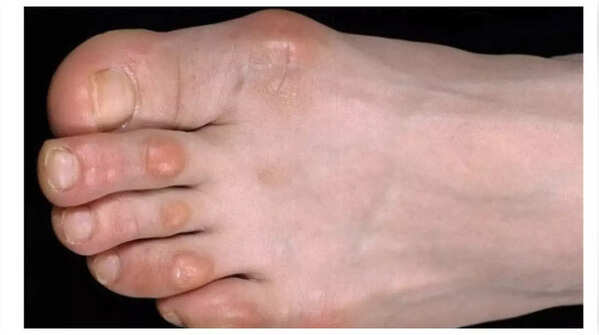
Painful, red or purple lumps on the fingers or toes, known as Osler nodes, can be indicative of heart infection or other heart-related issues. These lumps may appear and disappear over hours or days. If such painful bumps are observed, prompt medical advice should be sought.
Sources:
The American Academy of Dermatology Mohs Dermatology
Disclaimer: This article serves informational purposes only and is not a substitute for professional medical advice. Always consult with a qualified healthcare provider for any health concerns or before making any decisions related to your health or treatment.
Newer articles
 Emma Raducanu Shuts Down Carlos Alcaraz Dating Rumors with Playful Wimbledon Press Conference Quip
Emma Raducanu Shuts Down Carlos Alcaraz Dating Rumors with Playful Wimbledon Press Conference Quip
 Rishabh Pant's "Revolutionary" Cricket Style Hailed by Greg Chappell
Rishabh Pant's "Revolutionary" Cricket Style Hailed by Greg Chappell
 5 Silent Signals of Prediabetes: Recognize the Warning Signs Before a Blood Test
5 Silent Signals of Prediabetes: Recognize the Warning Signs Before a Blood Test
 Wimbledon 2025: Broadcast Guide for India and US Viewers - Dates, Prize Money, and Streaming Details
Wimbledon 2025: Broadcast Guide for India and US Viewers - Dates, Prize Money, and Streaming Details
 Smith Targets Second Test Return After Innovative New York Rehab
Smith Targets Second Test Return After Innovative New York Rehab
 Gavaskar Calls for Kuldeep Yadav's Inclusion in Second Test Amid Bumrah Fitness Doubts, Cites Birmingham Pitch Advantage
Gavaskar Calls for Kuldeep Yadav's Inclusion in Second Test Amid Bumrah Fitness Doubts, Cites Birmingham Pitch Advantage
 Skin Signals: 7 Unexpected Signs of Heart Disease You Should Know
Skin Signals: 7 Unexpected Signs of Heart Disease You Should Know
 India Poised for Dengue Breakthrough as Vaccine Candidate Nears Trial Completion
India Poised for Dengue Breakthrough as Vaccine Candidate Nears Trial Completion
 Science-Backed Steps to a Healthier Heart: 5 Simple Habits for a Stronger You
Science-Backed Steps to a Healthier Heart: 5 Simple Habits for a Stronger You
 FIFA Club World Cup 2025: Upsets, Messi Magic, and 2026 World Cup Concerns Emerge From Group Stage
FIFA Club World Cup 2025: Upsets, Messi Magic, and 2026 World Cup Concerns Emerge From Group Stage